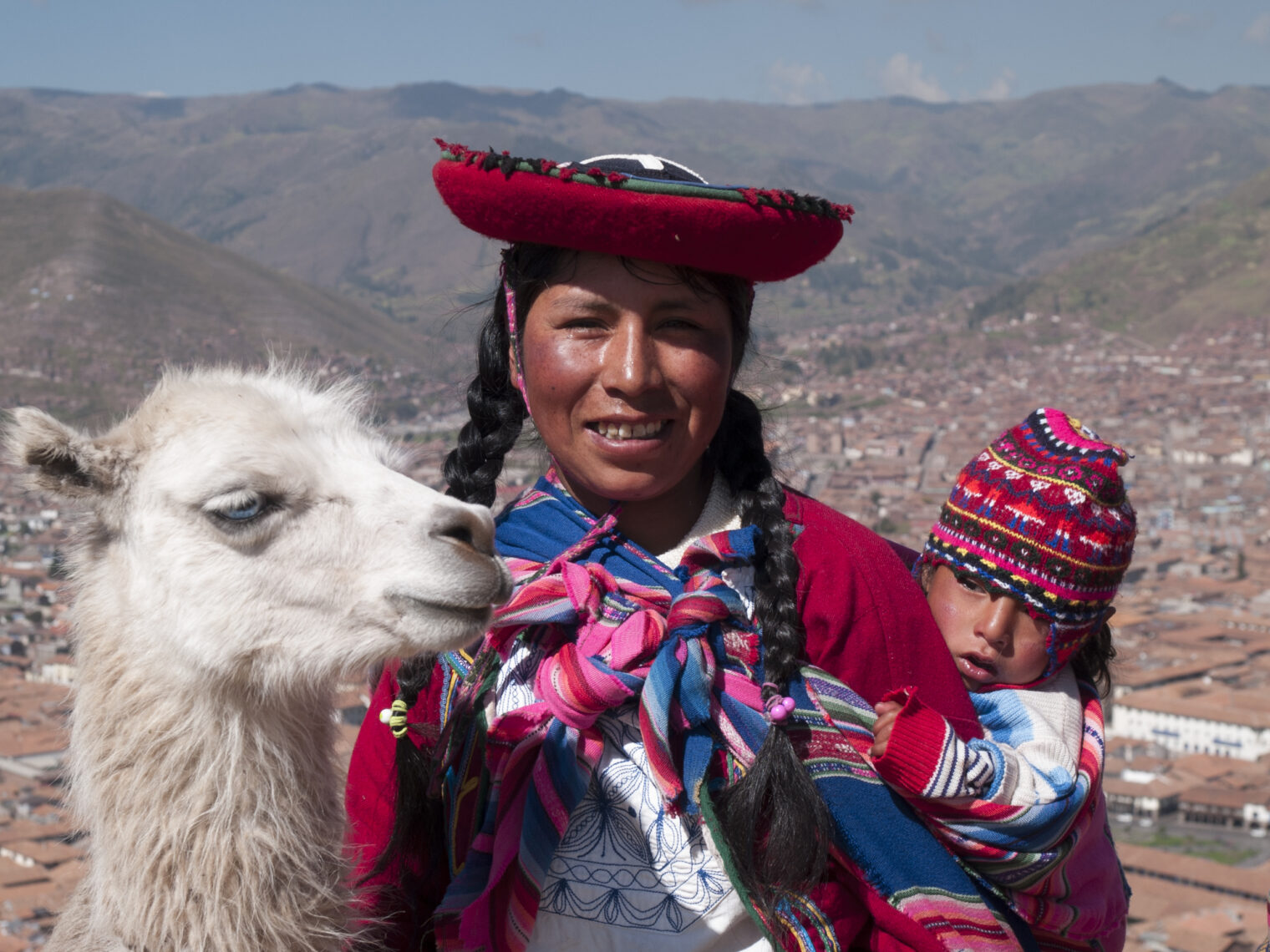From NPR, March 24, “I’m An American Stuck In Peru — Glad To Be On Lockdown To Avoid COVID-19”:
Peruvian President Martín Vizcarra had just declared a total quarantine for 15 days, halting all air and land transportation, even taxis. With fewer than 150 cases of coronavirus identified at the time, the Andean country was immediately going into lockdown to stem the spread of the virus. … We have followed the daily White House briefings, where U.S. leaders often insisted what a great job they were doing but stopped short of announcing a national lockdown. … By contrast, on Friday in Peru, President Vizcarra addressed his nation in a speech that sent his popularity skyrocketing. He insisted on the urgency of the quarantine, then chastised those Peruvians who disregarded it and the local authorities who didn’t enforce it “with the strictness this situation requires.” … In the next few days, TV news showed images of residents on their apartment balconies cheering on police and public health enforcers in the streets. … Peru’s swift shutdown of intercity travel is likely to help reduce the spread of the virus. The government’s actions, the nation’s solidarity and seriousness of its approach have raised our hopes that the quarantine will expire as planned on March 31, and the disaster will be controlled enough to permit limited travel for folks like us to return home. … At least the measures here mesh with the lessons The New York Times drew from a study of Italy, the new epicenter of the virus: “that steps to isolate the coronavirus and people’s movement need to be put in place early, with absolute clarity, then strictly enforced.” U.S. infections have surged each day yet the federal government has remained reluctant to impose drastic actions. Other countries such as Italy and Spain have enforced quarantines, but too late to stop COVID-19 from ravaging them. … When we do get out, what scares us most is the life we may encounter when we get to the U.S.
From June, Christian Science Monitor:
Peru set a global example of quick action in the face of COVID-19, implementing a nationwide lockdown March 16, soon after its first confirmed case. The government invested in respirators and hospital beds, and offered bonuses to medical professionals. It designed an economic relief package that not only offered low-interest loans to businesses and helped employers keep workers on payrolls, but also targeted the poor, vulnerable, and self-employed with vital cash transfers.
In other words, the country did everything right thanks to effective leadership. However…
Despite Peru’s lauded response efforts, it now [in June] has one of the world’s longest lockdowns, and the second-highest tally of COVID-19 cases in Latin America, with more than 264,000 cases and more than 8,000 people killed. In the region, Peru ranks only behind Brazil, which has taken a decidedly less deliberate approach to halting the pandemic. Where things went wrong, experts say, was in misunderstanding the dynamics of poverty in a country that has gained “middle-income” status over two decades of growth.
Peru took the same kind of muscular action that was credited with keeping Covid-19 deaths in Laos, Cambodia, and Vietnam to 0. But the virus went in a different direction in Peru, suggesting that humans do not control the virus. The WHO dashboard shows Peru having the world’s highest COVID-19 death rate, having surpassed (female-led) Belgium, Spain, the UK, Chile, the wicked scoffers in Brazil, the unfortunate Italians, the wicked Swedes with their anti-lockdown anti-mask MD/PhDs, and we Americans, so sorely lacking in the national leadership that would intimidate the virus.
Peru has had a lot of problems with drug-resistant tuberculosis. Maybe it is a place where microbes infecting the lungs happens to flourish?
Readers: What do we know about Peru right now? Can it be said that the God of Shutdown is a fickle god and is punishing truly righteous Peruvians for reasons that we will never understand?
Related:


> Peru has had a lot of problems with drug-resistant tuberculosis. Maybe it is a place where microbes infecting the lungs happens to flourish?
That’s one explanation, but it could also be that they have a lot of poor people congregating in ways that result in more TB spread. Looking at the photos in the CSM article with the street vendors in La Parada and especially the aerial shot of all the caved-in rooftops, it’s a story of poverty: “Like the staggering 70% of Peruvian workers that labor in the informal sector, the notebook and school-supply salesman lived largely day to day, without much savings to fall back on.” And they didn’t have any good way to count those people, even in the cities, or even distribute the small amount of relief money to most of them. A lot of the aid was stolen, of course, and their databases were “out of date.”
Where do we see outbreaks of drug-resistant TB in the United States? Among the homeless, particularly those with HIV and other comorbidities.
We see new COVID outbreaks among all the kids who want to party as they return to their expensive college campuses, and thus we have a First World COVID situation with them. In Peru, people spread the virus because ““When the option is to die of hunger or hope that this illness doesn’t get you, of course you break quarantine to try and feed your family…”
So it’s not really that much of a mystery or the fickle God of Shutdown.
Nope. All shutdowns do is delay the inevitable spread of the virus. Goven that immunity to RNA viruses tends to fade quickly (months) it follows that really effective social distancing will create the second, third, etc waves, thus resulting in far more victims than just letting the epidemic to burn itself quickly. The worst part is tgat these lockdown happy shitholes create reservoirs of disease to reinfect saner societies worldwide.
averros: I don’t think anything you’re saying makes sense. If immunity only lasts several months, obviously herd immunity through natural infection is impossible (it’s likely impossible anyway, since I don’t think there’s actually any precedent for this ever having happened before). So far it’s been countries taking limited or ineffective action to stop the spread of the virus re-infecting countries like New Zealand or China that have been taking effective action. Since here immunity doesn’t work and probably can never work as a strategy to stop the spread of the virus, you can’t blame “lockdown happy shitholes” for re-infecting these countries where the virus never stopped spreading and maybe never will stop spreading.
It’s fascinating to contrast NPR’s take with a contemporaneous story in Time magazine. My recollection was that almost every American trapped in Peru was doing everything they could think of to get back home, and recommending that everyone do more.
Check it out, they use one of the same photos, but a very different slant in the story. NPR is Superchurch, has been from the beginning, and they pick their narratives.
https://time.com/5816050/coronavirus-repatriation-evacuation-travel/
“How People Came Together on Social Media to Help American Travelers Stranded in Peru”
“As a group, 5,000 people have helped themselves, their fellow citizens, and the U.S. government make the repatriation process smoother and swifter. As I watch Americans continue to be or get stranded in countries around the world, I wholeheartedly urge them to replicate and improve upon the #stuckinperu process.”
Why can’t we all be like Peru?
Because we’re not THAT stupid, perhaps?
Here are 2 articles from the wall street journal which say basically humans cannot control the virus. But as the great Barack Obama always said….. If you like your shutdowns you can keep your shutdowns.
https://archive.fo/wESxO
https://archive.fo/cB162
Kiss Kiss I love you all.
The shutdowns are meant to delay the spread of the virus. The reason is to provide time for PPE supply chains to come up to speed and time for the strengthening of contact tracing, planning and implementing targeted quarantine of the infectious as restrictions are lifted. The practice is proving successful elsewhere and we will eventually implement an American version.
Sooner would be better, but the Pandemic Era is just beginning.
Here’s a Twitter thread that helps explain why the US’s response to coronavirus has been so poor:
https://twitter.com/aslavitt/status/1301996518421999617?s=21
— A couple held a wedding, indoors, with 275 guests (even Sweden limits public gatherings to 50 people) with reportedly no mask use, that resulted in 56 people getting infected with coronavirus, plus however many people refused to get tested. Obviously if you don’t get tested, you’re not going to self-quarantine or participate in contact tracing.
– Parents are refusing to get their kids tested for coronavirus, even if they appear obviously sick with it, since they don’t want their school or daycare center to have to close (they’d prefer for everyone else’s kid and their families to get sick and keep spreading the virus). Doctors aren’t allowed to notify any of these patients’ contacts and inform them of the risk due to patient confidentiality.
– The compliance rate for contact tracing among college students is reportedly close to 0%.
Humans have known for thousands of years of the need for isolating sick people to prevent the spread of the infectious disease:
https://www.thelastdialogue.org/article/bible-on-laws-of-quarantine/
It’s unclear why Americans seem to think we no longer need to follow this advice, since this strategy is clearly not working very well for us (deaths are currently declining again but we still have ~850 per day in the US and many of these could have been prevented if people were less selfish, or the government enforced the rules better).
Here’s another wedding that would have been illegal in Sweden:
https://www.nbcnews.com/news/us-news/3-deaths-147-coronavirus-cases-now-tied-maine-wedding-n1239353
Three people died as a result, and none of them even made a choice to attend the wedding: they were infected by others who did.
The simplest explanation for the country with the strictest lockdown having the most cases of the virus is that the virus is fake, and places where the local authorities are the most enthusiastic participants in the scam will also be the places where the local authorities are most willing to juice the stats.
Agreed – very simple for every government and doctor on Earth to collaborate in secret to shut down the world economy.